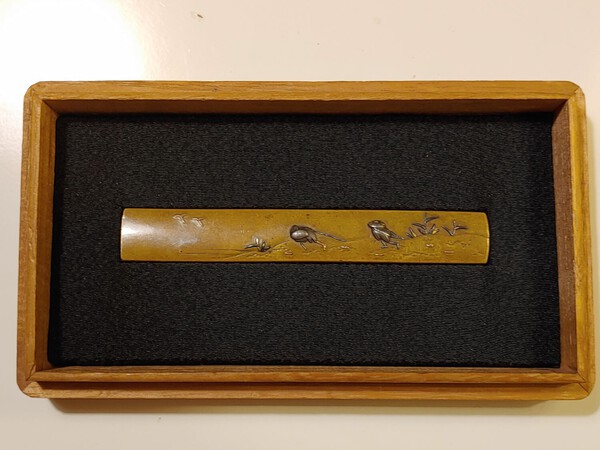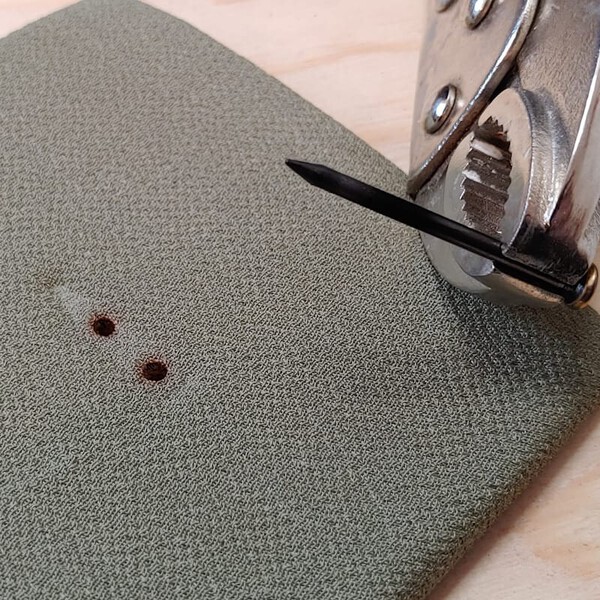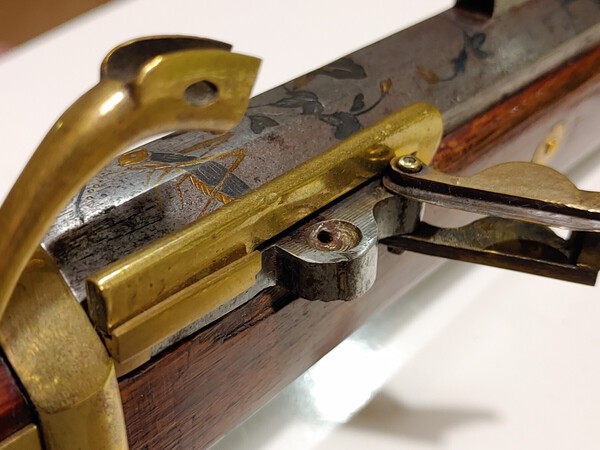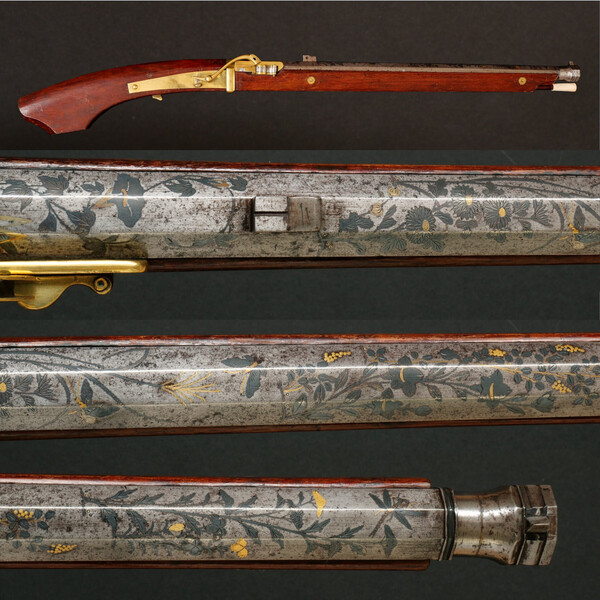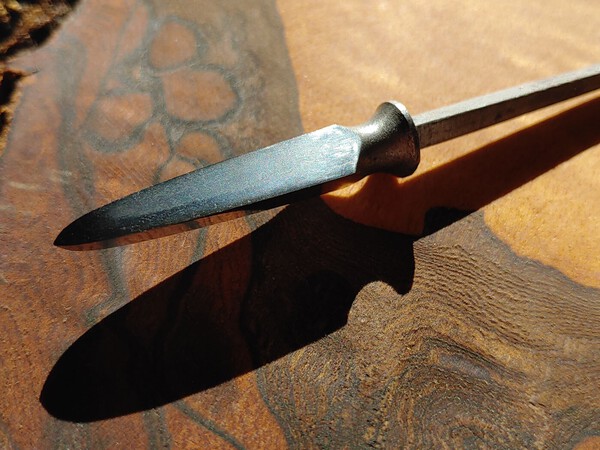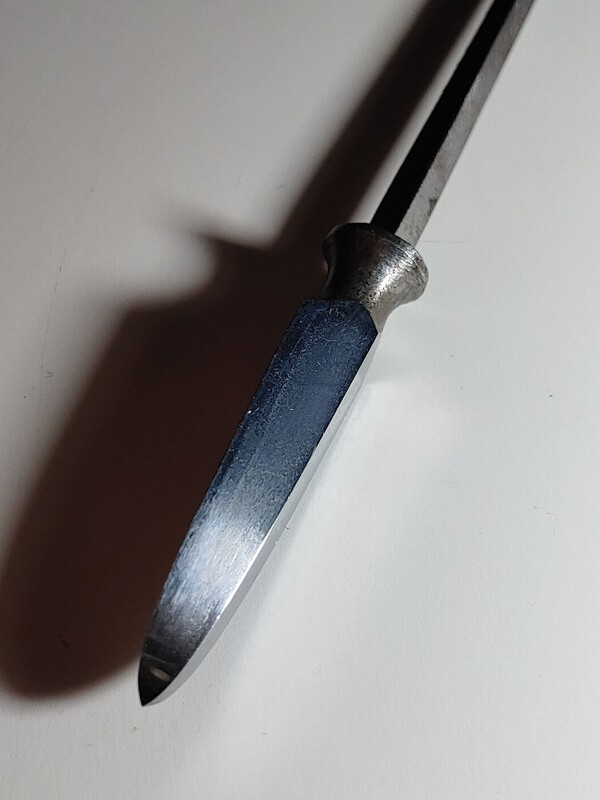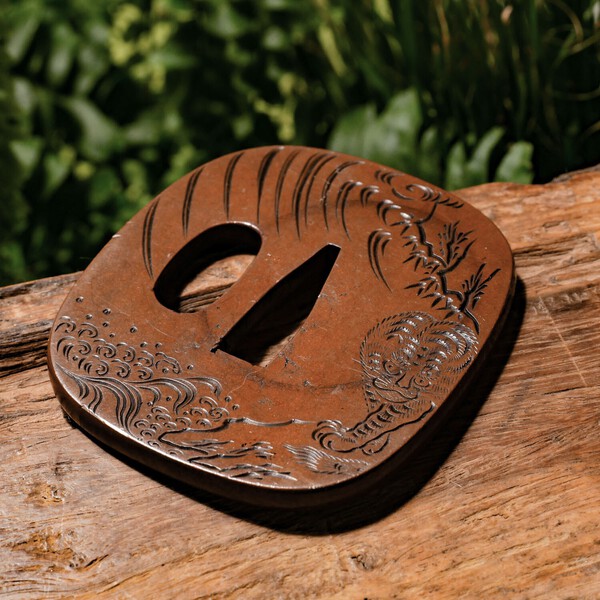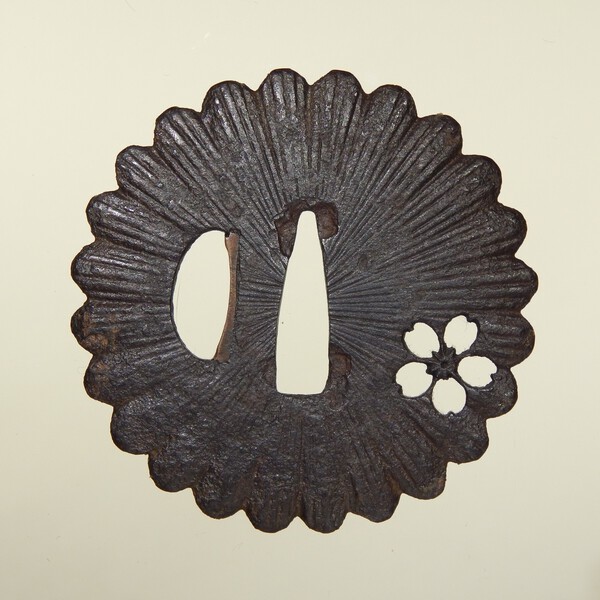-
Posts
501 -
Joined
-
Last visited
-
Days Won
5
Everything posted by Andi B.
-
I also use these acrylic display stands (can be found in mineral shops for items like agate disks etc.).
-
Hi, I can recommend the great instructions from Paul Kremers' website tsuba.info. https://tsuba.info/making-a-kozuka-dai/ So I upgraded some of my old boxes... ...but if paulownia wood is available, it's not so difficult to make them too:
-
Now I got it: The paper says Tsukushi 土筆, which is the eatable spore stem of Tokusa 木賊 (Horsetail, which I would have expected to be mentioned). It's great what things you can learn with this hobby!
-
Right now I was about to look for the pdf with the description of Japanese plants (which is available in the NMB download section) to check, if some of the Kanji describe the horsetail motiv, but you were faster with your reply! Thanks a lot! Very helpful: https://www.militaria.co.za/nmb/files/file/47-flowers-in-Japanese-art/
-
yes, third, fourth and fifth radical means Nanako-ji = fish roe surface...
-
Hello, I want to translate two columns of a hozon paper but I'm struggling with some words and their proper translation: 一王筆図縁頭無銘水戸 Ichi ???? Fuchi Kashira Mumei Mito = Item: ???? Fuchi/Kashira, unsigned Mito 赤銅魚子地 据紋象嵌色絵 Shakudō nanakoji ???? (kyo mon?) zōgan iroe = Shakudo, Nanako surface, ???? coloured inlays Would be great, if someone could help!
-
We had this here already but I highly recommend to remove the steel nails always! The solution working for me is to drill one or two holes in the nakago ana piece and glue in some thin shish kebab skewer. Then I burn the matching holes through the base plate with a glowing thick nail (wetten the silk before). (When trying to drill through the silk and padding, the silk winded around the drill, so I chose this way.) Finally I glue the pieces together.
-
-
Thank you - I'll check this mixture. 👍 These green looking parts are more grey but in sunlight this artificial rainbow (modern gun blue?) effect appears. I think the actual material is silver.
-
No, there is no special coating - the inlays made from silver are black (naturally oxidized or patinated), gold is untreated golden of course and the iron is (brushed?) light gray. I could imagine, it was maybe completely cleaned some time ago to remove rust and so the brown iron patina (if there was any) and any other colouring got lost. Then - not knowing of the original state - only the silver has been blackened to get a nice contrast. At least that's what I assume, because actually I would expect a reversed color scheme. Or am I completely wrong and unburnished barrels were also common?
-
Thanks Piers for this feedback! Yes, ramrod has been made and added by the previous owner. The bisen screw can be removed and the pan has a clean vent as you can see below. The protection plate 'ama ooi' was a bit loose because there was no 'ana ooi kusabi'. This little (lying L shaped) brass piece below the long plate is a DIY replacement by me to pretend completeness... I assume the surface has been cleaned and treated somehow over the time and so I'm asking myself if dark motifs on a bright ground or bright motifs on a dark ground was the original colour/patination scheme. 🤔
-
Hello, I'm looking for information about this kind of teppo. It is a slim and short rifle/pistol with an overall lenght of 65 cm (barrel 41 cm, calibre 10,5 mm). It's most probably a Bajō-zutsu (or is there something equivalent to a wakizashi?). But what puzzles me the most is the unpatinated shiny barrel with these nice floral and insect inlays in gold and blackened silver, which i have never seen before. I'm not so familar with teppo and how they usually look like but I would expect a black-brownish barrel with silver inlays, so the barrel is protected and only the small silver parts may oxidize. But this way the whole iron barrel is prone to rusting, while silver and gold stay fine. Can someone confim, that this is the intended state or has pictures of similar examples? Or any hints, how these kind of teppo usually should look like?
-
Do these yajiri all have hamon? I wonder, because I assume, battle yanone are "disposable" arrow heads, right?
-
-
(deleted by me)
-
Checking the original scaled picture I would say it's suriage only on one side... Joke aside: No first idea but I aligned pictures of both sides for better comparison.
-
My two general advices for beginners: 1. Look for blades in good conditions. 🤓 Forget the idea of buying yunky and suspicious blades and let them restored (unless you have a really good eye and know a professional polisher). Compare the price of a nice blade vs. the price of a yunk blade + restoration cost + risk of hidden flaws + time to wait... As soon you've seen undamaged and polished blades with some nice activities, you won't become happy, if your blade is only a rusty yunk piece lacking all the Nihonto-typical beautiful features. (If you're interested in Dutch oil paintings, would you buy a scraped-off canvas only because it's old...?) 2. Know your stuff. 🧐 I compare sword collecting with collecting mushrooms in the forrest: There you only take pieces home you can safely identify (at least as eatable). Ok, as beginner your meal might be small, but you surely wouldn't risk your health by taking pieces unknown to you - especially if they are ugly and rotten. Instead of playing with the idea of eating them, you would simply ignore them. With growing expertise your meal will become larger and - more important - tastier! Same with swords and tosogu: If something is strange or suspicious (fakes!), simply don't buy it. And even if a sword might be authentic - there is no benefit in buying a piece which causes bad gut feelings due to its bad conditions...
-
Hi, I can contribute with this Kiku (?) tsuba. But I found a picture of a similar piece with a rim so I assume it was removed on mine...
-
-

What is the best Nihonto Blade you've ever seen in hand
Andi B. replied to Tom Darling's topic in Nihonto
Hard to say, because 'best' is relative and subjective. Luckily I had the oportunites to hold blades of great smiths (e.g. Kiyomaro, Kotetsu & Kaneuji) my hands but unfortunately I don't have the experience to fully see and understand the high art of these pieces. So these are names I can prag with but nothing more... -
(...not sure but I heard, that in old times Japanese thought leopards are female tigers - that's why they appear as pair...) 🤔
-

Polishing/restoring of Arrowheads
Andi B. replied to Moritsuchi's topic in General Nihonto Related Discussion
Hi, no restauration but presentation: If you have a cabinet/shelf with hollow boards (for lights) and insert a strong magnet, the yanone can stand... -

How to fill in nakago holes
Andi B. replied to Larason2's topic in General Nihonto Related Discussion




